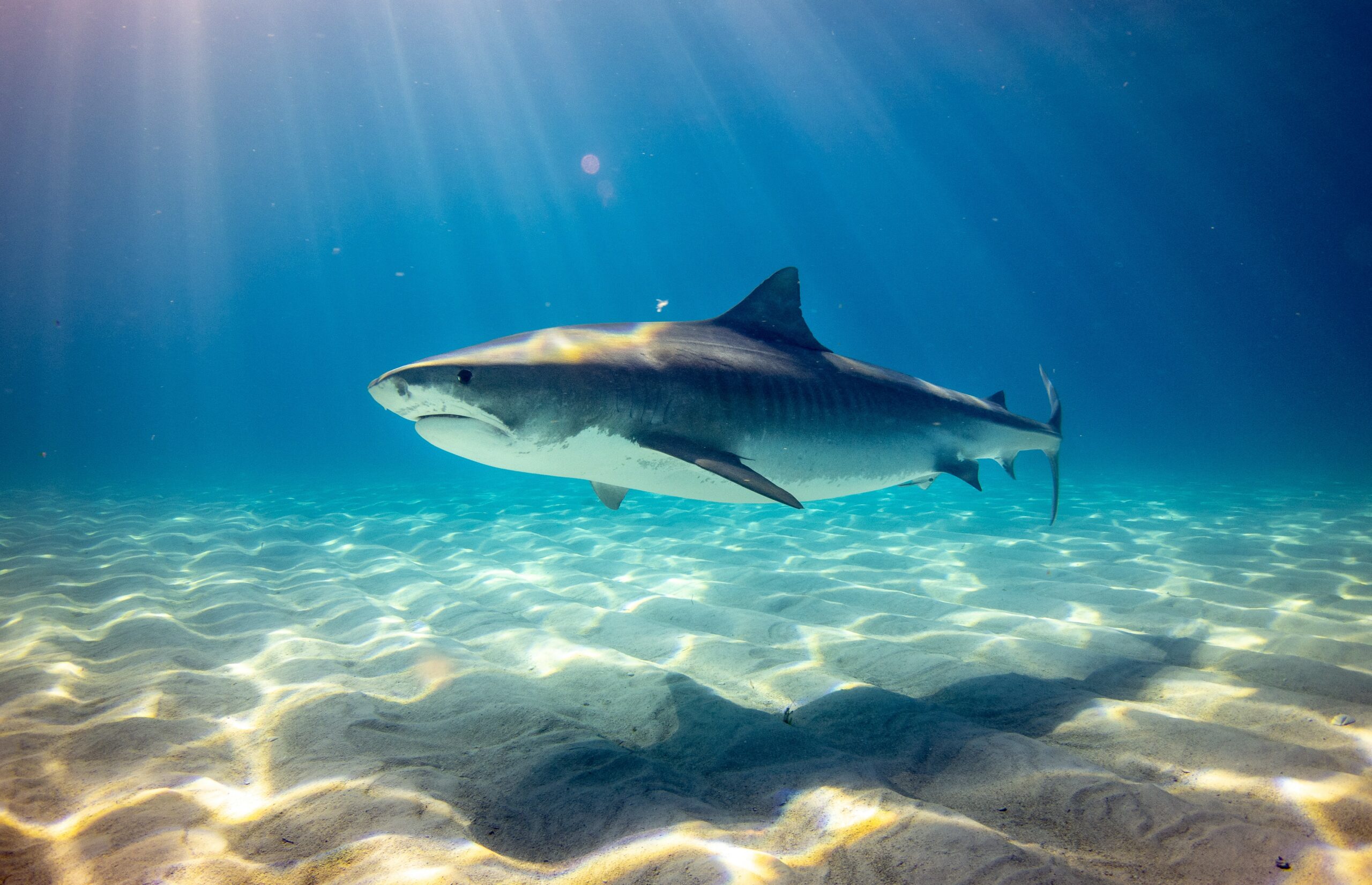Sharks are a captivating group of fish belonging to the class Chondrichthyes, distinguished by their cartilaginous skeletons, a feature that sets them apart from bony fish. Occupying a wide range of aquatic environments, from shallow coastal waters to the deep sea, sharks are found in all the world’s oceans and are an integral part of marine ecosystems. Known for their streamlined bodies, powerful swimming abilities, and, in many species, rows of sharp teeth, sharks have adapted to a variety of ecological niches over millions of years, showcasing their evolutionary success.
Sharks are unique for several reasons. They possess a highly developed sensory system, including the ability to detect electrical fields generated by other organisms, a feature known as electroreception. This, combined with their keen sense of smell and acute vision, makes them formidable predators. Additionally, sharks’ skin is covered with tiny, tooth-like structures called dermal denticles, which reduce drag and provide protection.
With over 500 known species, sharks exhibit remarkable diversity, ranging from the small and docile dwarf lanternshark to the formidable great white shark. Their role as apex and mesopredators in marine food webs is crucial for maintaining the balance of marine ecosystems. The evolutionary history, biological adaptations, and ecological significance of sharks not only make them a subject of scientific interest but also highlight the importance of their conservation in the face of increasing environmental challenges
Sharks Summary
While many people fear sharks, many others are fascinated by their mysterious nature. Although there is a need to respect them, there are minimal reasons to fear them. You are invited to dive into the world of sharks below and explore their diverse types and the variety of unique characteristics.
Sharks are magnificent creatures that play a crucial role in maintaining the balance of marine ecosystems. From their diverse species to their unique reproductive strategies and dietary preferences, sharks continue to inspire awe and curiosity. As we strive to understand better and appreciate these incredible predators, let us also work towards their conservation, ensuring their future survival and the preservation of our oceans’ delicate harmony.



































































